On March 7th 2016, a crestfallen Maria Sharapova took the stage in Los Angeles to announce that she had failed a drug test at the 2016 Australian Open for a drug called meldonium. Sharapova supports nearly a dozen charities, a dozen causes, and was a goodwill ambassador for the United Nations Development Programme, a role which she has been suspended from in light of her failed test. Being the fantastic athlete and upstanding person that she is, on top of her public announcement and cooperation shows that she did not intentionally infringe upon regulations. She publicly stated that she did not even know that the drug was added to a list and considered a performance enhancing drug.
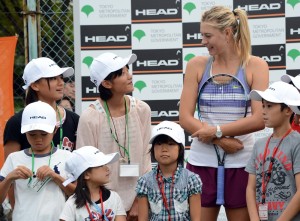
Meldonium is a drug, also known as mildronate, produced by a pharmaceutical company Grindeks, and is used to treat symptoms of diabetes and irregular EKG results, both of which Sharapova exhibited in her youth. Her doctor prescribed the medication without the intent to give her an upper hand in competition, a medication that was not added to the World Anti-Doping Agency banned substance list until January 1st of 2016. Grindeks released a statement, in which representatives said that meldonium is used to prevent cell death, and does not constitute “doping”. In a statement, representatives said, “Meldonium cannot improve athletic performance, but it can stop tissue damage in the case of ischemia [deficient blood flow to a body part]. That is why it is a therapeutic drug”. The drug has never before been recognized as a performance enhancer, and was not prescribed to Sharapova with that intent, so why should she be considered at fault?
Sharapova states “For the past 10 years I have been given a medicine called mildronate by my family doctor and a few days ago after I received the ITF letter I found out that it also has another name of meldonium”. “On 1 January the rules had changed and meldonium became a prohibited substance which I had not known. I failed the rest and I take full responsibility for it”, said Sharapova. It is understandable when preparing for competition, training and taking care of her body, that she did not take the time to cross check her prescription medication with The (Banned Substance) List, as it is referred to.
Meldonium was added to the World Anti-Doping Agency banned substance list on January 1st 2016, which Sharapova failed to notice. Every year, an updated list of banned substances is made available to athletes; yet, Sharapova stated that she and her staff neglected to read the list. I have looked at the WADA Banned Substance List, and it is incredibly poorly organized and hard to read. Substances are not listed clearly, but are lumped together in one paragraph, including their true chemical name, such as “dehydrochlormethyltestosterone (4-chloro-17β-hydroxy-17α-methylandrosta- 1,4-dien-3-one)”
Her explanation and public apology for the mistake were sincere and showed remorse. It is understandable that somebody would not take the time to read through the confusing substance list to see if a medication they take has been added. She did not attempt to hide anything, like athletes such as Barry Bonds, Lance Armstrong and Alex Rodriguez did before they openly admitted to INTENTIONALLY doping. She was open and honest; her prescription was filled through her family doctor and not kept a secret. Other famous cases of athletes found to have intentionally taken performance enhancing drugs typically involve years of denial, secrecy and lies. Sharapova’s method of handling the situation shares no similarities with the cases listed.
In the case of Lance Armstrong, he was accused of taking PEDs (Performance enhancing drugs) first in 1999 after he achieved incredible athletic feats during the Tour de France, that nobody in the media believed he would be able to do naturally. He denied the accusations, stating that “it would make no sense for him to dope”. He had a professional relationship with Michele Ferrari, an Italian trainer known for using controversial methods with his athletes. He denied any foul play. In 2004, he was accused, along with other cyclists on the Motorola cycling team, of using drugs. He and all of his teammates denied the allegations, and almost all of the teammates were later found guilty. When a newspaper later in 2004 reprinted the same story, including allegations of drug use, Armstrong sued for libel. In court, two different witnesses had contradictory accounts of whether Armstrong had doped. The allegations and repetitive denials go on until in 2013, the jig was up, and on the Oprah Winfrey Network, Armstrong admitted that all throughout his career, throughout all of the denial, he was actually taking drugs.
None of Sharapova’s behavior is consistent with Armstrong’s story, and none of it leads to the conclusion that she was attempting to gain a competitive advantage over her opponents in any way. Her love for the sport, honesty and sincerity outweigh the simple mistake of not reading through every line of a convoluted and complicated document.
The athlete became a rising star in the mid 2000’s when at the age of 14, she competed in her first professional competition. In 2006, at the age of 17, she beat Serena Williams in the finals of the Wimbledon to win her first Grand Slam title. This incredible feat could only be achieved by a truly talented and dedicated athlete, one who didn’t begin taking the so-called “performance enhancing drug” until one year following her victory.

The prevailing opinion is that meldonium is a banned substance, and that Maria Sharapova has known all along that she was taking a drug that could increase her ability in the game of tennis, however, for nearly one-hundred percent on the time she was taking the medication, she had no idea that there was any issue of the drug being branded as “performance enhancing”.
She explains in her press conference that she failed a drug test at the Australian open and takes full responsibility for it, that she made a huge mistake. She states, “I let my fans down, I let the sport down that I have been playing since the age of four and I love so deeply. I know with this I face consequences and I don’t want to end my career this way and I really hope I will be given another chance to play this game”.
On July 9th 2012 the United States Anti-Doping Agency announced that United States women’s national soccer team goalkeeper Hope Solo tested positive for a banned substance. Similar to Sharapova’s case, Solo states, “I took a medication prescribed by my personal doctor for pre-menstrual purposes that I did not know contained a diuretic. Once informed of this fact, I immediately cooperated with USADA and shared with them everything they needed to properly conclude that I made an honest mistake, and that the medication did not enhance my performance in any way”. Solo’s incident was deemed an honest mistake, and that she did not intend to break any rules. Solo, much like Sharapova, has a love for the sport she plays, is a philanthropist and a good person. The agency looked at the facts of the case and the quality of Solo’s character and decided that she deserved a second chance. Maria Sharapova equally deserves a second chance. She has not earned the lack of respect, loss of sponsorships, and suspension from not only the game, but her roles as a philanthropist herself.
When seeing their personal or family doctor, most people, like Solo and Sharapova, are simply looking for a treatment or cure for existing symptoms or ailments, and will trust that their medical advisor will prescribe the best possible medication for them. The fact that both players unknowingly were taking drugs that are banned by the World Anti-Doping Agency and immediately and publicly cooperated with the agency to resolve the matter and get back to what is truly important to both of them – playing the sports that each of them live for and love.
Works Cited
-
Code, The World Anti-Doping. THE 2015 PROHIBITED LIST INTERNATIONAL STANDARD (n.d.): n. pag. Web.
-
“History of Lance Armstrong Doping Allegations.” Wikipedia. Wikimedia Foundation, n.d. Web. 25 Apr. 2016.
-
Kubota, By Taylor. “Maria Sharapova’s Failed Doping Test: What Is Meldonium?” LiveScience. TechMedia Network, 11 Mar. 2016. Web. 25 Apr. 2016.
-
Majendie, Matt. “Maria Sharapova: Baby-faced Teen Who Conquered Wimbledon.” CNN. Cable News Network, n.d. Web. 25 Apr. 2016.
-
“Maria Sharapova Banned from Tennis after Testing Positive for Recently Banned Drug.” Women in the World in Association with The New York Times WITW. NY Times, 08 Mar. 2016. Web. 25 Apr. 2016.
-
“Tokyo Charity Tennis Clinic 2012.” Maria Sharapova Official Website. N.p., n.d. Web. 25 Apr. 2016.
-
“US Soccer Athlete, Solo, Accepts Public Warning For Rule Violation | U.S. Anti-Doping Agency (USADA).” U.S. Anti-Doping Agency (USADA). USADA, 09 July 2012. Web. 25 Apr. 2016.
WRT205 Unit III Reflection
- The title, “Maria Sharapova: Not a Typical Doper” brings to light the recent headline of Maria Sharapova failing a drug test for doping for those who did not already know. It also, for those readers who already knew about the test, contradicts the prevailing public opinion that she is guilty of being a typical doper – that is, intentionally attempting to enhance her performance. The lede is too long, the argument/stance actually is found in the third sentence, it would have been good to find a way to make the lede the first sentence. The surrounding text, however, does lead the reader into the article by providing insight (in a broad way, which is expanded upon in the following writing).
- The introductory section offers up exigency by giving the date of the incident – recent within the past two months. The first section could be more inviting to the reader, it is relatively bland.
- The ‘idea’ is strong, that is goes beyond just did she or did she not fail the test, but did she intentionally do it? Most people probably do not know that Sharapova is a philanthropist, evidence that she is a good person, not somebody who would intentionally cheat.
- The article is laid out in a way that shows clarity of thought. The reader will probably ask after the intro, what is meldonium? The next section explains this. They would then think, why did she take it, if not for doping purposes? Again, the section following explains this, and so on.
- There are some instances of vagueness and cliché, unfortunately. The first sentence of the 6th section, “Her explanation and public apology for the mistake were sincere and showed remorse”, is entirely opinionative, and a NYT Magazine reader would challenge this. Need more specifics.
- The controversy is well explored, by analyzing similar cases, as well as specifics about Sharapova’s particular case, and looking at the timeline of her case to explain the controversial stance taken that she is not “guilty”.
- More than one primary source is used, by comparing both Lance Armstrong’s doping case and Hope Solo’s doping case to Sharapova’s. One of these was used to replace a secondary source. I felt that it was necessary to have this additional primary research in order to convince the reader that my argument holds water. I wanted to compare Sharapova’s case to both the case of an innocent and guilty athlete, to show that she shares similarities with the innocent one and dissimilarities with the guilty one. More than one visual source is used to try to make the reader empathize with Sharapova. Seeing her at a charitable foundation for children, and winning the Wimbledon title at 17 years old show the reader that she is a good person and great athlete.
- Some quotes are not introduced effectively, and are just “drop-quoted”. That is something that I have always struggled with as a writer.
- The second paragraph/section effectively uses a position of authority (the manufacturer of the drug) to support and make a claim about the position.
- The visual of Sharapova at a Tokyo Charity with children is effective by making the reader exude sympathy and empathy for Sharapova’s case. It is meant to help reinforce the idea that Sharapova is a good person, not one who would use performance enhancing drugs.
- Honestly, I did not get to use the various drafts for development of the article as well as I would have liked. I am in one of the hardest semesters of my college career and was not able to spend as much time as I would have liked to synthesizing drafts and peer reviews. The reviews that I did receive from peers were also extremely broad and vague, and did not make any specific suggestions but essentially told me to be more “convincing”, not offering any suggestions as to how I could do that.
- The hyperlink used is to an article on Meldonium, the drug of interest in this article. It is used to give readers a chance to read more about the drug, rather than to spend words and time on the article describing it in more detail than is necessary for the argument.
- Grammar is typically not an issue for me, and I believe that I edited the article properly in this regard. The style of the article needed more editing – I was not able to recreate the style of a NYT Mag article very well. This would have allowed me to establish more credibility/authority, by appearing more comfortable in my writing style and in deconstructing/constructing my claim.

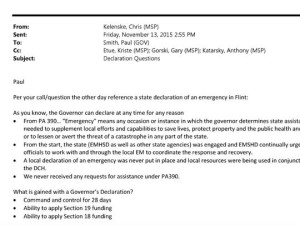
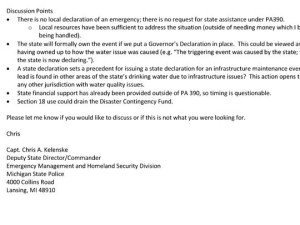





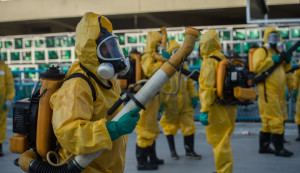
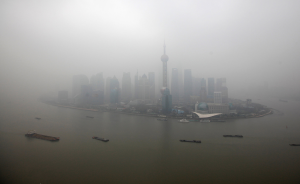

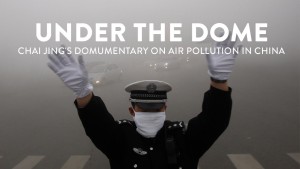



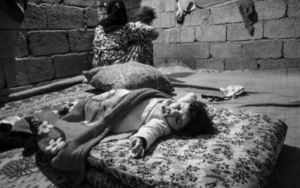



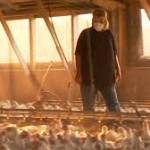



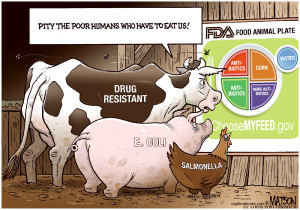 th the growing food system. The lack of manpower leads to a lack of inspections and oversight of practices that in turn are twisted and there is more room for error which leads to food borne illness and other things.
th the growing food system. The lack of manpower leads to a lack of inspections and oversight of practices that in turn are twisted and there is more room for error which leads to food borne illness and other things.